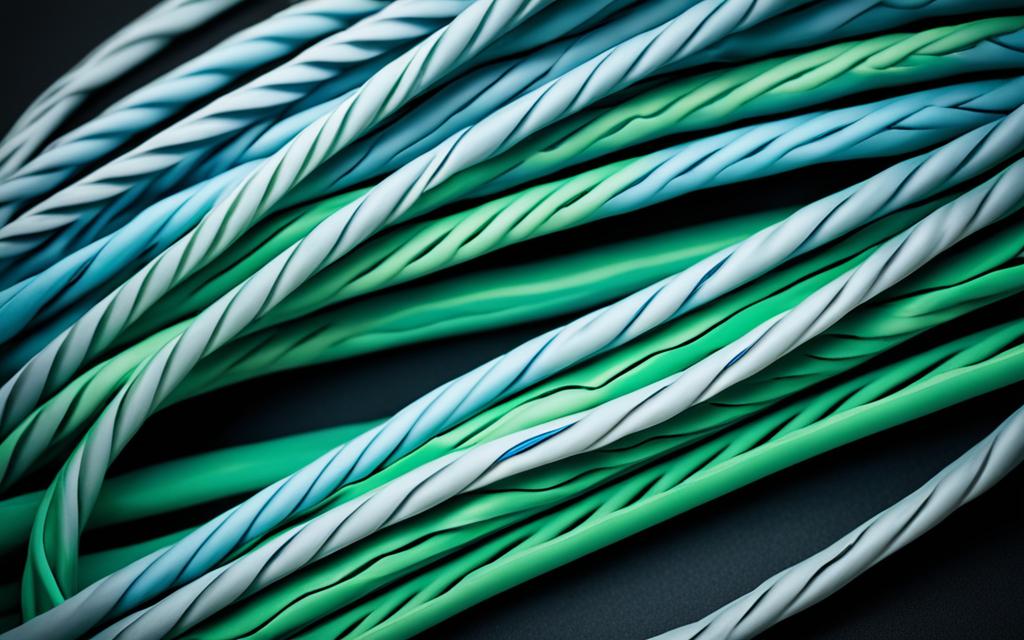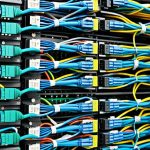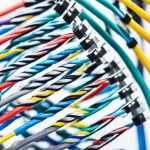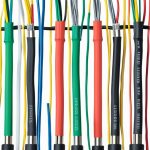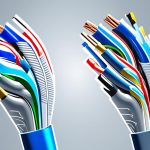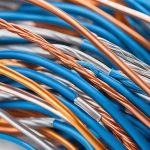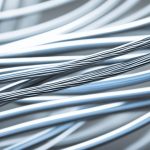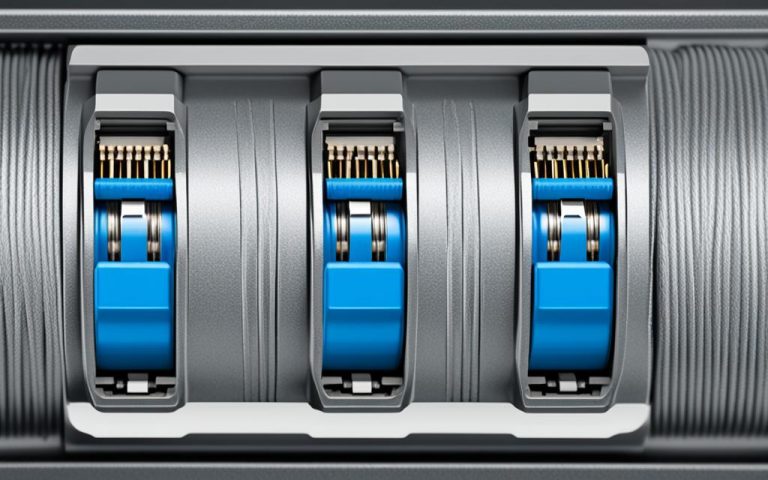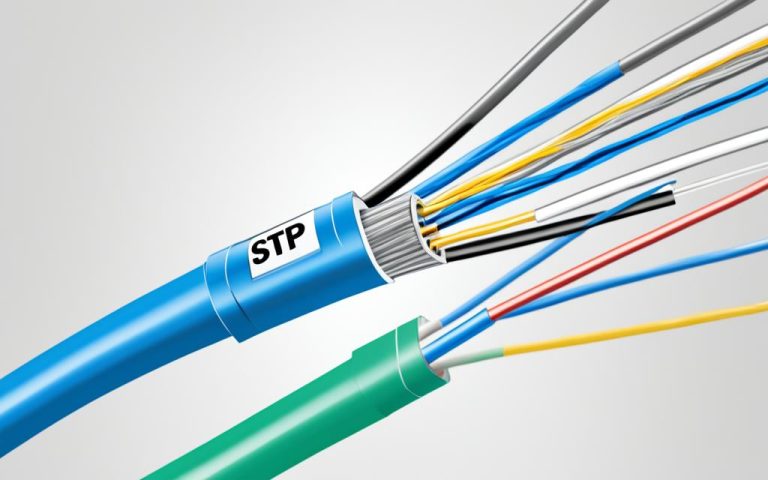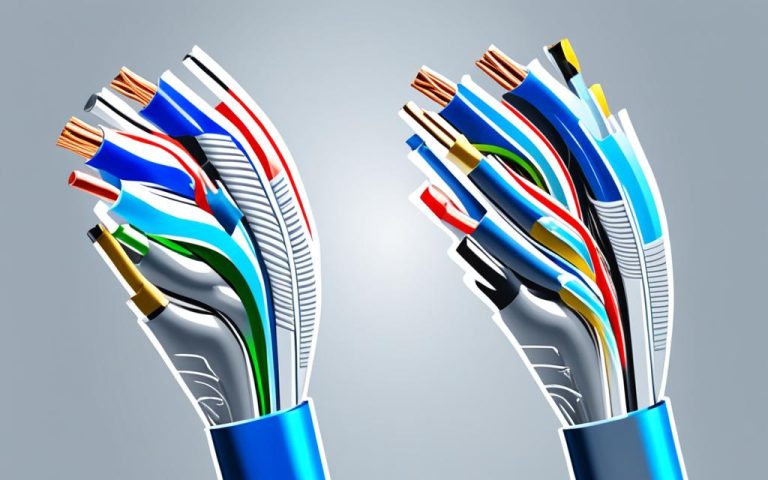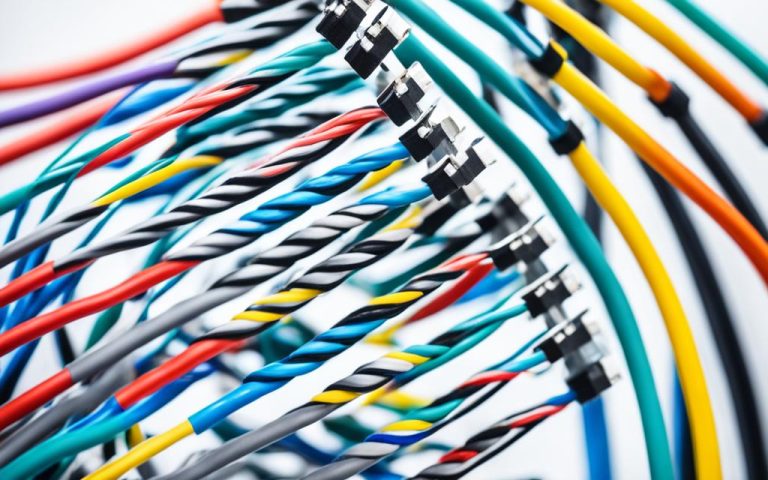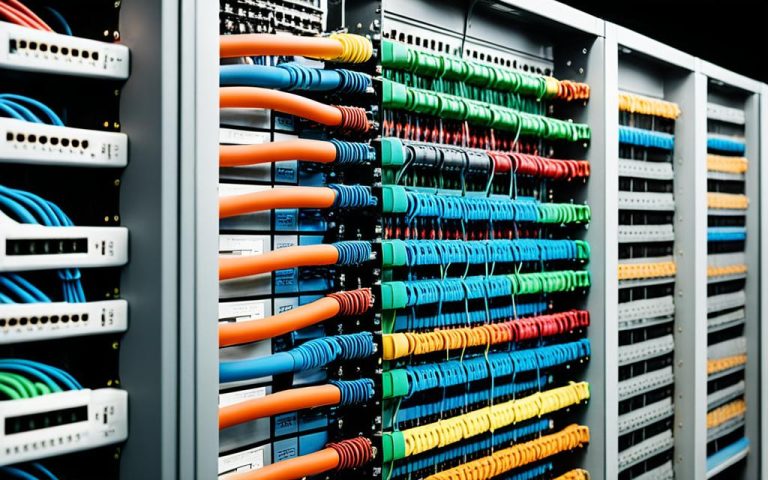Twisted pair cables are an essential component in modern communication and networking systems. To fully appreciate their benefits and capabilities, it is important to understand the science behind these cables and the engineering principles that drive their design.
Twisted pair cables consist of two copper conductors that are tightly twisted together. One conductor carries the signal, while the other serves as a ground reference. This simple yet effective design plays a crucial role in ensuring optimal signal quality.
The twisting characteristic of these cables helps mitigate noise and crosstalk, which can degrade the signal. By twisting the conductors together, electromagnetic interference from external sources is canceled out, resulting in clearer and more reliable transmission.
When it comes to the engineering of twisted pair cables, there are two main classifications: unshielded twisted pair (UTP) cables and shielded twisted pair (STP) cables.
UTP cables are cost-effective and easy to install, making them the most widely used type of twisted pair cable. They are commonly employed for short-distance voice and data transmission. On the other hand, STP cables are more expensive and feature additional insulation in the form of a copper braid. This added shielding provides enhanced protection against noise and signal interference, making STP cables suitable for long-distance communication.
Understanding the science and engineering behind twisted pair cables is essential for maximizing their performance and ensuring reliable connectivity in various applications.
Types of Twisted Pair Cables
When it comes to twisted pair cables, there are two main types: unshielded twisted pair (UTP) cables and shielded twisted pair (STP) cables. These cables have distinct characteristics and are designed for different applications. Let’s take a closer look at each type:
Unshielded Twisted Pair (UTP) Cables
UTP cables consist of two copper wires that are twisted together without any additional insulation or shielding. They are widely used due to their cost-effectiveness, ease of installation, and versatility.
UTP cables are commonly used for short-distance transmission, making them ideal for applications such as Ethernet connections in residential and office environments. They are categorized into different classes based on their quality, with Cat5e and Cat6 being the most commonly used for high-speed data transmission.
One of the advantages of UTP cables is their color-coded design, which allows for easy identification during installation. This makes it convenient to distinguish between different cable types or purposes.
However, UTP cables have some limitations. They provide minimal protection against electromagnetic interference (EMI) and radio frequency interference (RFI) due to the lack of shielding. As a result, they may be more susceptible to signal degradation and noise interference, especially in environments with high levels of electrical interference.
Shielded Twisted Pair (STP) Cables
STP cables, on the other hand, have additional insulation or protective covering in the form of a copper braid or foil. This shielding effectively reduces noise and signal interference, providing better signal quality and reliability.
STP cables are commonly used in environments where there is a higher risk of EMI and RFI, such as industrial settings or areas with heavy electrical equipment. They offer superior protection against external interference, ensuring stable communication and data transmission.
However, the added shielding also makes STP cables more expensive and difficult to install compared to UTP cables. The extra insulation can increase the cable’s thickness and weight, requiring additional care during installation to maintain proper grounding and minimize signal loss.
| Type of Cable | Advantages | Disadvantages |
|---|---|---|
| Unshielded Twisted Pair (UTP) Cables |
|
|
| Shielded Twisted Pair (STP) Cables |
|
|
Advantages and Disadvantages of Twisted Pair Cables
Twisted pair cables offer several advantages that make them a popular choice for various applications. First, they are highly cost-effective, providing a reliable and affordable solution for communication and networking needs. Additionally, the ease of installation is another significant advantage of twisted pair cables. Whether it’s for telephone lines, DSL lines, or local area networks (LANs), twisted pair cables can be easily installed, saving time and effort.
Twisted pair cables are compatible with both analog and digital transmission. This versatility ensures their suitability for a wide range of applications, making them a flexible and convenient choice.
“Twisted pair cables are highly cost-effective, easy to install, and compatible with various applications.”
However, twisted pair cables do have some disadvantages that need to be considered. First, they have limited bandwidth compared to other cable types, such as fiber optic cables. This limitation can restrict the data transmission capacity, especially for high-speed applications.
Another disadvantage of twisted pair cables is their shorter transmission distance. Unshielded twisted pair (UTP) cables, in particular, have a maximum transmission distance of up to 100 meters. This can be a limitation in larger networking setups that require longer distances.
In terms of security, twisted pair cables offer lower protection against external interference and eavesdropping compared to shielded cables. This makes them less suitable for sensitive data transmission where higher security measures are required.
Shielded twisted pair (STP) cables, although providing better noise and interference protection, require more maintenance and are generally more expensive than unshielded cables. This can impact their cost-effectiveness and practicality for some applications.
While twisted pair cables have their limitations, they continue to be widely used due to their advantages and compatibility with various systems. The choice of twisted pair cables should be based on the specific requirements of each application, considering factors such as cost, transmission distance, bandwidth, and security needs.
Summary:
In summary, twisted pair cables offer advantages such as cost-effectiveness, ease of installation, and compatibility with various applications. However, they also have limitations in terms of limited bandwidth, shorter transmission distance, and lower security compared to other cable types. Understanding the specific requirements and trade-offs associated with twisted pair cables is essential in making informed decisions for communication and networking systems.
Advantages:
- Cost-effective
- Easy to install
- Compatible with various applications
- Suitable for analog and digital transmission
Disadvantages:
- Limited bandwidth
- Shorter transmission distance (up to 100 meters for UTP cables)
- Lower security compared to other cable types
- STP cables require more maintenance and are more expensive than UTP cables
Applications of Twisted Pair Cables
Twisted pair cables have a wide range of applications in various fields. Their versatility and reliability make them a popular choice for different communication and networking needs. Some key applications of twisted pair cables include:
Telephone Lines
Twisted pair cables are commonly used in telephone lines to provide both data and voice channels. The twisted design of the cables helps reduce interference and cross-talk, ensuring clear and reliable communication. Whether it’s a traditional landline or a digital telephone system, twisted pair cables play a crucial role in transmitting signals.
Local Area Networks (LANs)
Twisted pair cables are extensively used in LANs for connecting computers, printers, and other devices within a limited geographical area. The cables enable reliable data transfer at high speeds, facilitating efficient communication and collaboration within an organization. With the growing demand for seamless network connectivity, twisted pair cables continue to be the backbone of LAN infrastructures.
RJ-45 Connectors
RJ-45 connectors, commonly known as Ethernet connectors, are another important application of twisted pair cables. These connectors are widely used to establish Ethernet connections and enable data transmission over twisted pair cables. They are commonly found in homes, offices, and data centers, connecting devices to local networks and the internet.
Twisted pair cables offer the advantage of supporting both analog and digital transmission. From telephone lines to data communication, these cables provide reliable connectivity for various industries.
| Applications | Features |
|---|---|
| Telephone lines | – Data and voice transmission – Reduced interference – Clear communication |
| Local Area Networks (LANs) | – Reliable data transfer – High-speed communication – Efficient collaboration |
| RJ-45 Connectors | – Ethernet connections – Data transmission – Wide usage |
With their wide range of applications and compatibility with various communication systems, twisted pair cables continue to be a vital component in modern-day connectivity infrastructure.
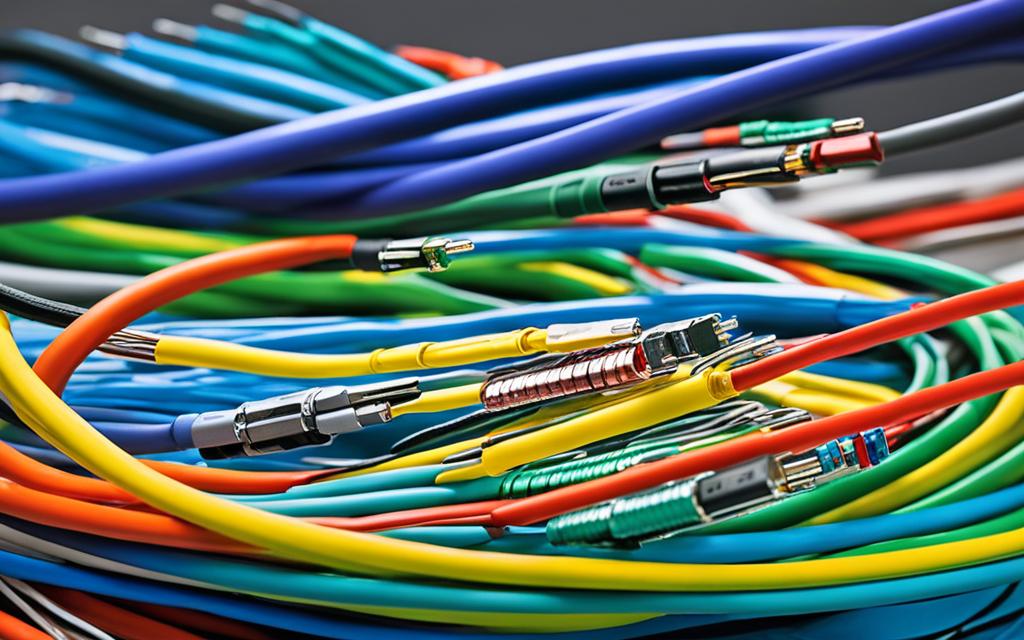
Prospects and Challenges of Twisted Pair Cables
Twisted pair cables continue to play a significant role in communication and networking systems. With the increasing demand for high-speed and reliable connections, the prospects for twisted pair cables are promising. One of the key prospects lies in their compatibility with higher data rates, such as Gigabit Ethernet. This opens up opportunities for improved performance and enhanced transmission capabilities.
However, twisted pair cables also face certain challenges that need to be addressed. One of the main challenges is their limited bandwidth compared to other cable types. While advancements have been made to increase the bandwidth of twisted pair cables, they still have certain limitations in terms of data transmission capacity.
“The limited bandwidth of twisted pair cables poses a challenge in meeting the growing demand for high-speed data transfer. However, technological advancements and improvements in cable design are constantly being pursued to overcome this challenge.”
Another challenge faced by twisted pair cables is the need for continuous improvement to meet the evolving communication requirements. With the rapid advancements in technology, new applications and devices require higher data rates and better signal integrity. This necessitates ongoing research and development efforts to enhance the performance and capabilities of twisted pair cables.
In conclusion, while twisted pair cables offer numerous advantages and prospects in communication and networking systems, they also face challenges that need to be addressed. The industry’s focus on improving the bandwidth and overall performance of twisted pair cables will determine their sustainability and relevance in the future.
Prospects and Challenges of Twisted Pair Cables
| Prospects | Challenges |
|---|---|
| Compatibility with higher data rates | Limited bandwidth compared to other cable types |
| Potential for improved performance | Continuous improvement required to meet evolving communication requirements |
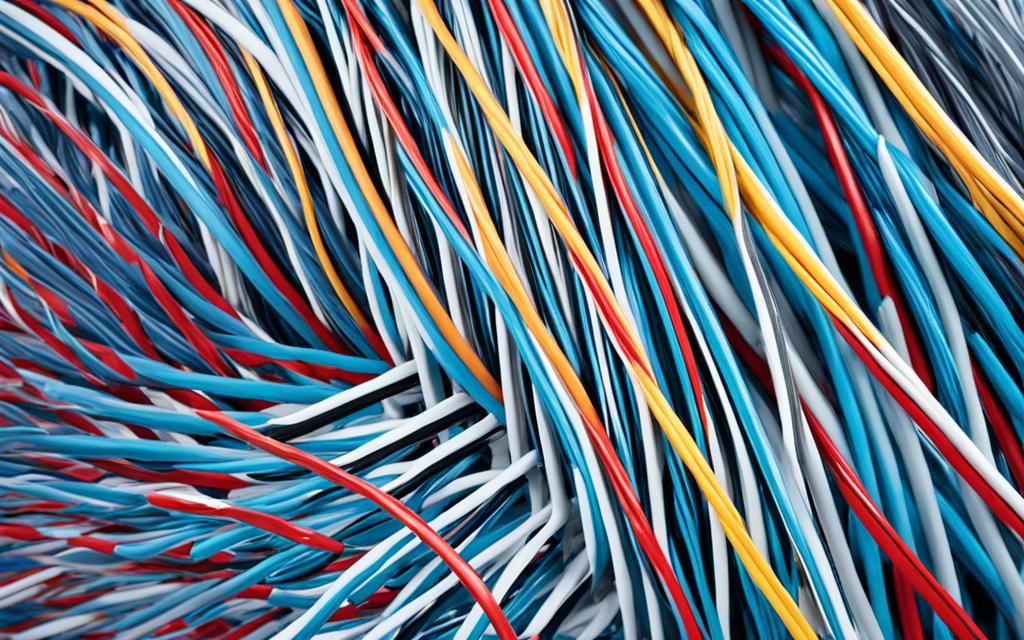
Conclusion
Twisted pair cables, including unshielded (UTP) and shielded (STP) varieties, offer a cost-effective and reliable solution for communication and networking needs. These cables are widely used in various applications due to their ease of installation and compatibility. However, it is important to be aware of their limitations, such as limited bandwidth and shorter transmission distances.
The prospects of twisted pair cables lie in their ability to adapt to higher data rates, such as Gigabit Ethernet, providing opportunities for faster and more efficient communication. However, it’s worth noting that these cables also face challenges in meeting the evolving demands of modern communication systems.
To fully leverage the benefits of twisted pair cables while overcoming their limitations, it is crucial to understand the science and engineering behind them. This knowledge allows for informed decision-making when selecting the appropriate cable type for specific applications and ensuring optimal performance in communication and networking setups.
FAQ
What are twisted pair cables?
Twisted pair cables are a type of guided media that consist of two copper conductors twisted together. One conductor carries the signal while the other serves as a ground reference. The twisting characteristic of the cables helps reduce noise and crosstalk, ensuring better signal quality.
What are the types of twisted pair cables?
Twisted pair cables are further classified into unshielded twisted pair (UTP) cables and shielded twisted pair (STP) cables. UTP cables are cost-effective, easy to install, and commonly used for short-distance transmission of voice and data. STP cables have extra insulation in the form of a copper braid, providing better noise and signal interference protection, but they are more expensive and used for long-distance communication.
What are the advantages and disadvantages of twisted pair cables?
Twisted pair cables offer several advantages, including cost-effectiveness, ease of installation, and compatibility with various applications. However, they also have limitations, such as limited bandwidth, shorter transmission distance (up to 100 meters for UTP), and lower security compared to other cable types. STP cables require more maintenance and are more expensive than UTP cables.
What are the applications of twisted pair cables?
Twisted pair cables are commonly used in telephone lines, DSL lines, and local area networks (LANs). They can be used for both analog and digital transmission, making them versatile in different industries. RJ-45 connectors, which are used for Ethernet connections, are a common application of twisted pair cables.
What are the prospects and challenges of twisted pair cables?
The prospects for twisted pair cables lie in their compatibility with higher data rates, such as Gigabit Ethernet. However, they also face challenges in meeting evolving communication needs due to their limited bandwidth compared to other cable types. Continuous improvement is required to overcome these challenges.
What is the summary of twisted pair cables?
Twisted pair cables are a type of guided media composed of two twisted copper conductors. They offer advantages in terms of cost-effectiveness, ease of installation, and compatibility with various applications. However, they also have limitations such as limited bandwidth and shorter transmission distances. The prospects for twisted pair cables lie in their adaptability to higher data rates, but they also face challenges in meeting evolving communication needs.

